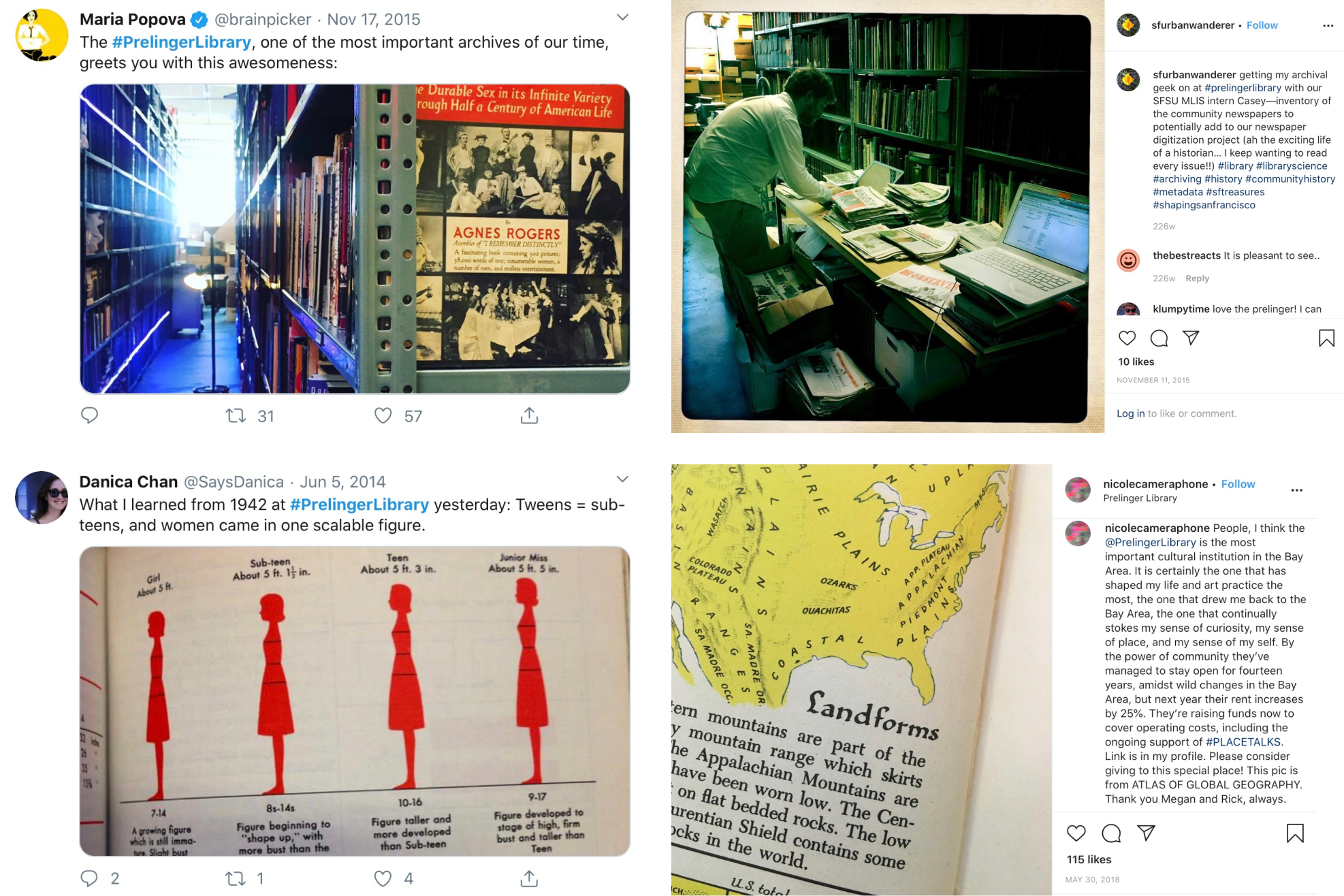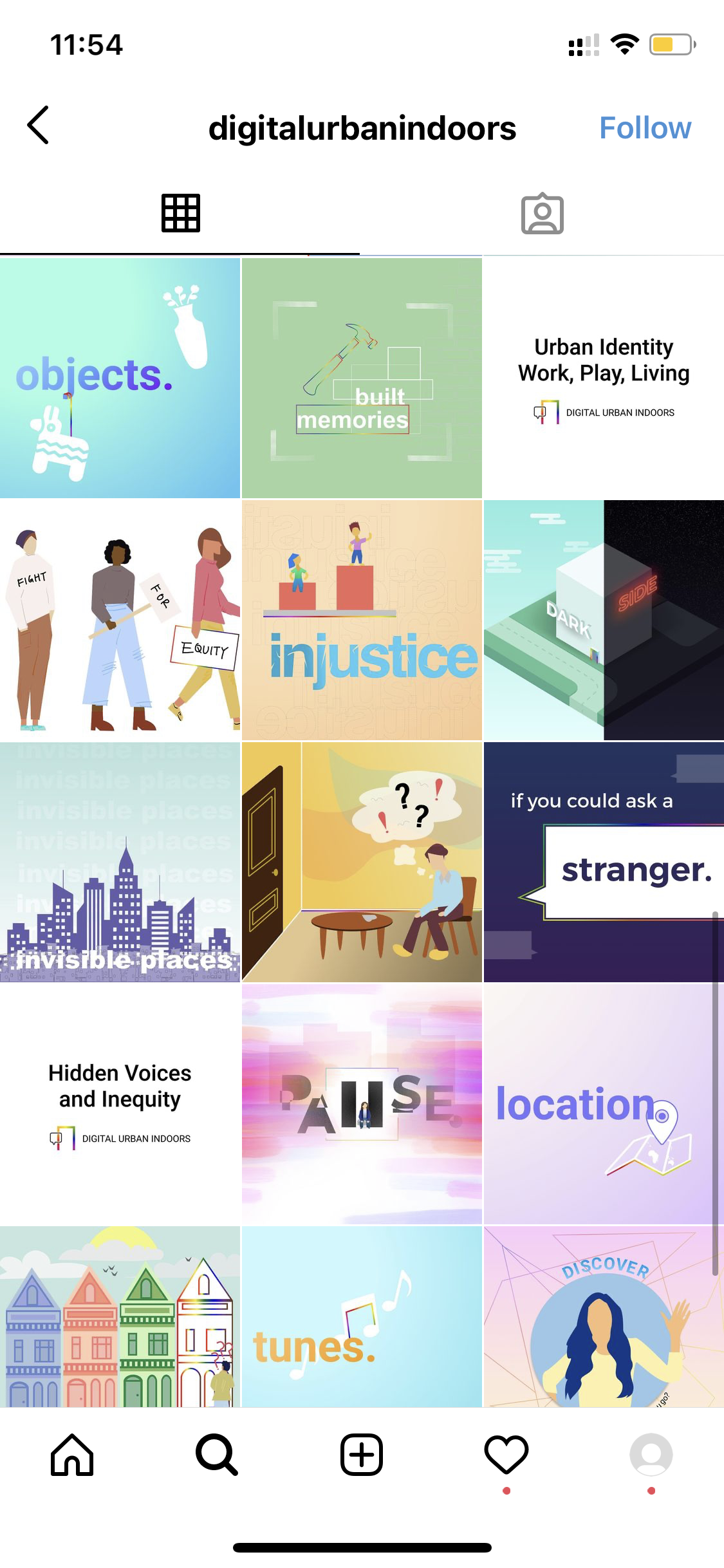
EHDD design brief
Exploring urban strategies to foster belonging.
summary
Esherick Homsey Dodge and Davis (EHDD) is a SF-based architectural firm that designs museums, aquariums, schools, offices, and civic places. My team at Berkeley Innovation was tasked with researching qualities of equitable and empathetic indoor spaces. Unfortunately, due to COVID-19, we had to pivot away from physical research, and instead relied on various digital research methods to write a 153-page design brief.
As the Research and Synthesis Lead for this project, I guided the team to conduct physical research, adopt digital research methods, and synthesize insights. I also contributed to social media management, conducting interviews, copywriting, and layout design.
role
Product Design Consultant, Research and Synthesis Lead
team
Bhushan Balagar (mentor), Sreya Cherukuri, Jessie Mindel, Jerome Wang
timeline
Jan. 2020- May. 2020
tools | skills | discipline
Figma | User Research Methodologies, Interviewing, Social Media, Data Analysis | UX Research, Urban Design, Spatial Design, Psychology

background
The architects at EHDD wanted to explore the idea of inclusivity and welcomeness in public spaces to better inform their own design methods and processes, and serve as a metric to evaluate the spaces they build. After the COVID-19 pandemic hit, this idea of space became more nuanced and we turned towards exploring digital space as well. Thus, the question we asked was,
“HOW MIGHT WE DESIGN SPACES, BOTH PHYSICALLY AND DIGITALLY, IN COMMUNITIES IN ORDER TO FOSTER BELONGING?”
the brief
A collection of a semester’s worth of research into physical and digital space, using a variety of research methods, and the insights we gleaned from all of that. It’s worth a read (or skim since it is 153 pages long)!
a sneek peek ⤵️
















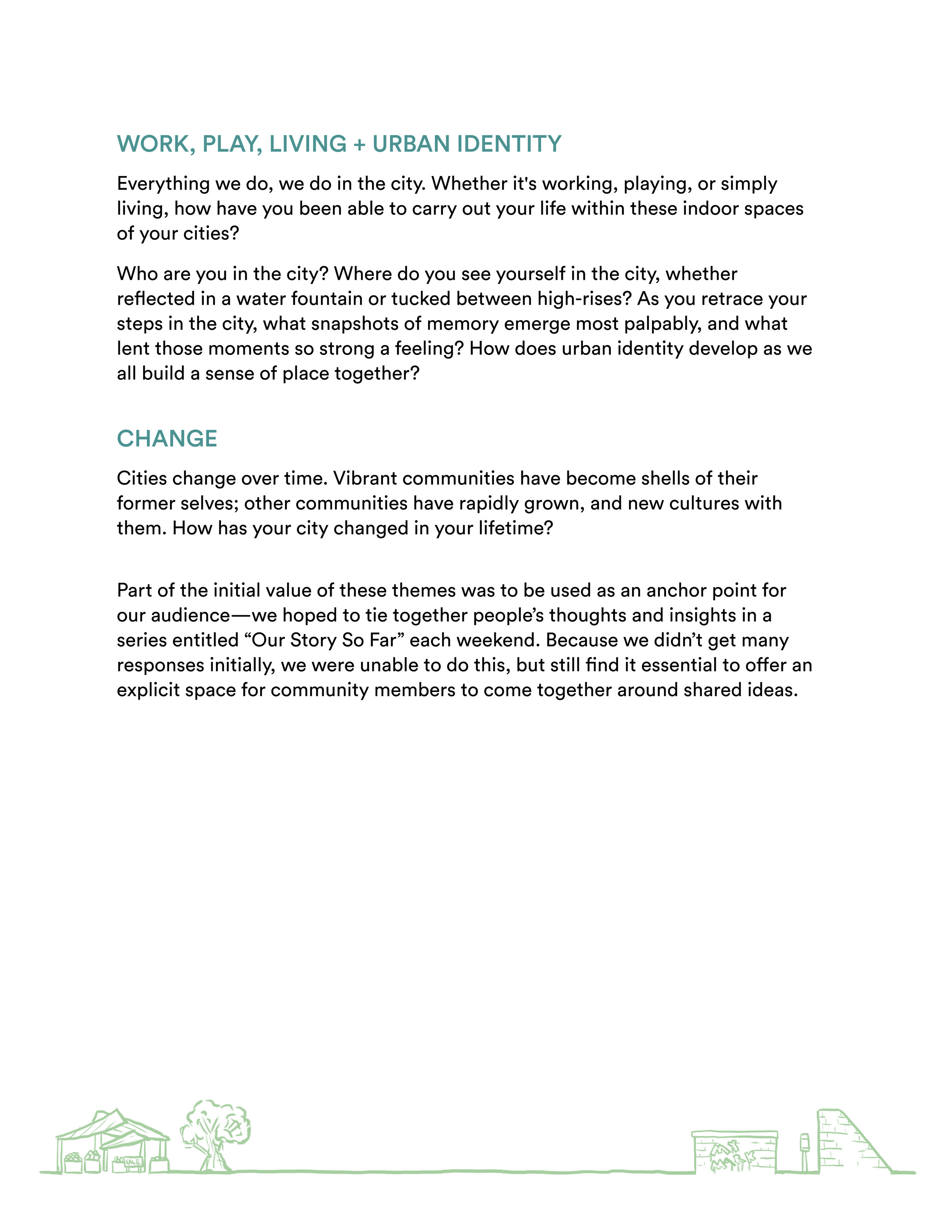

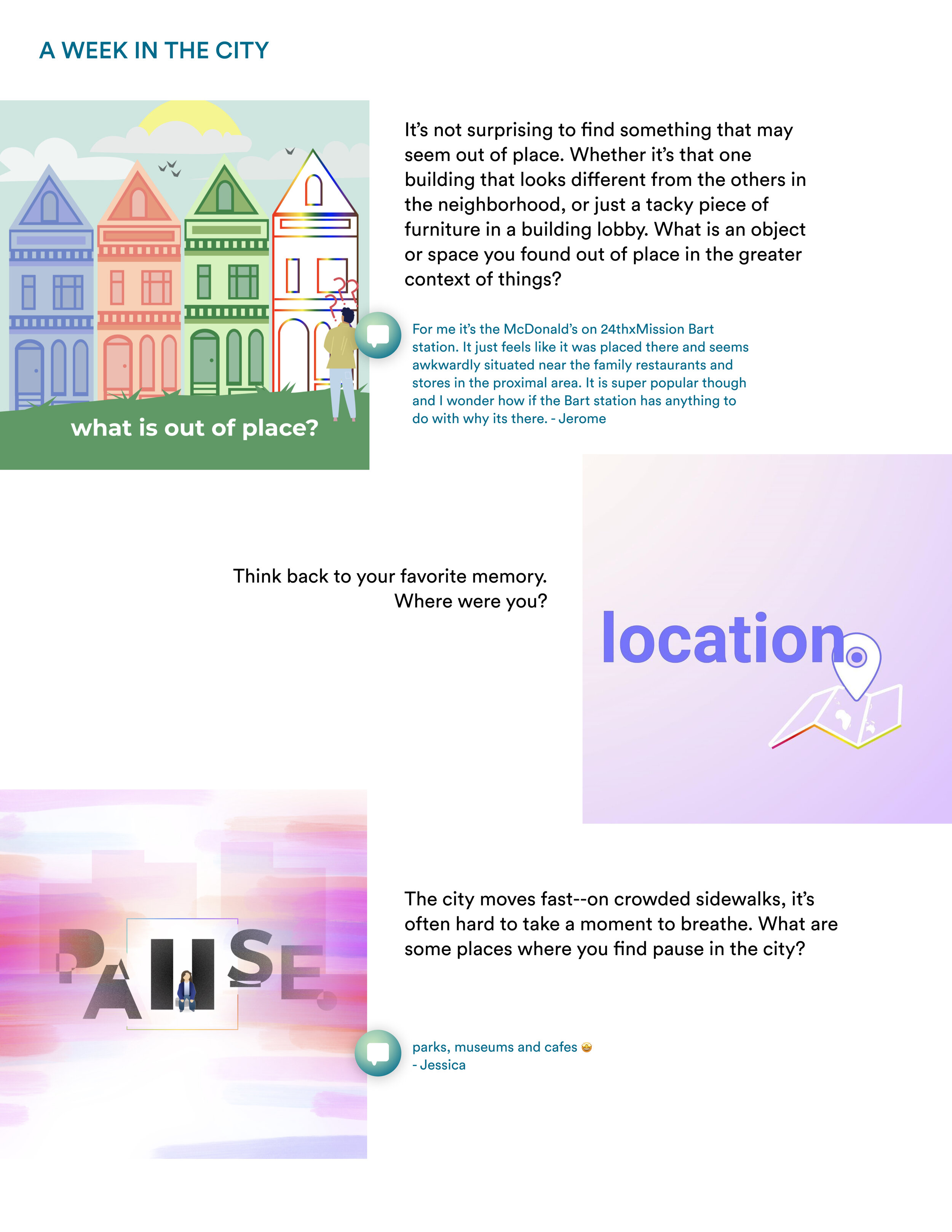


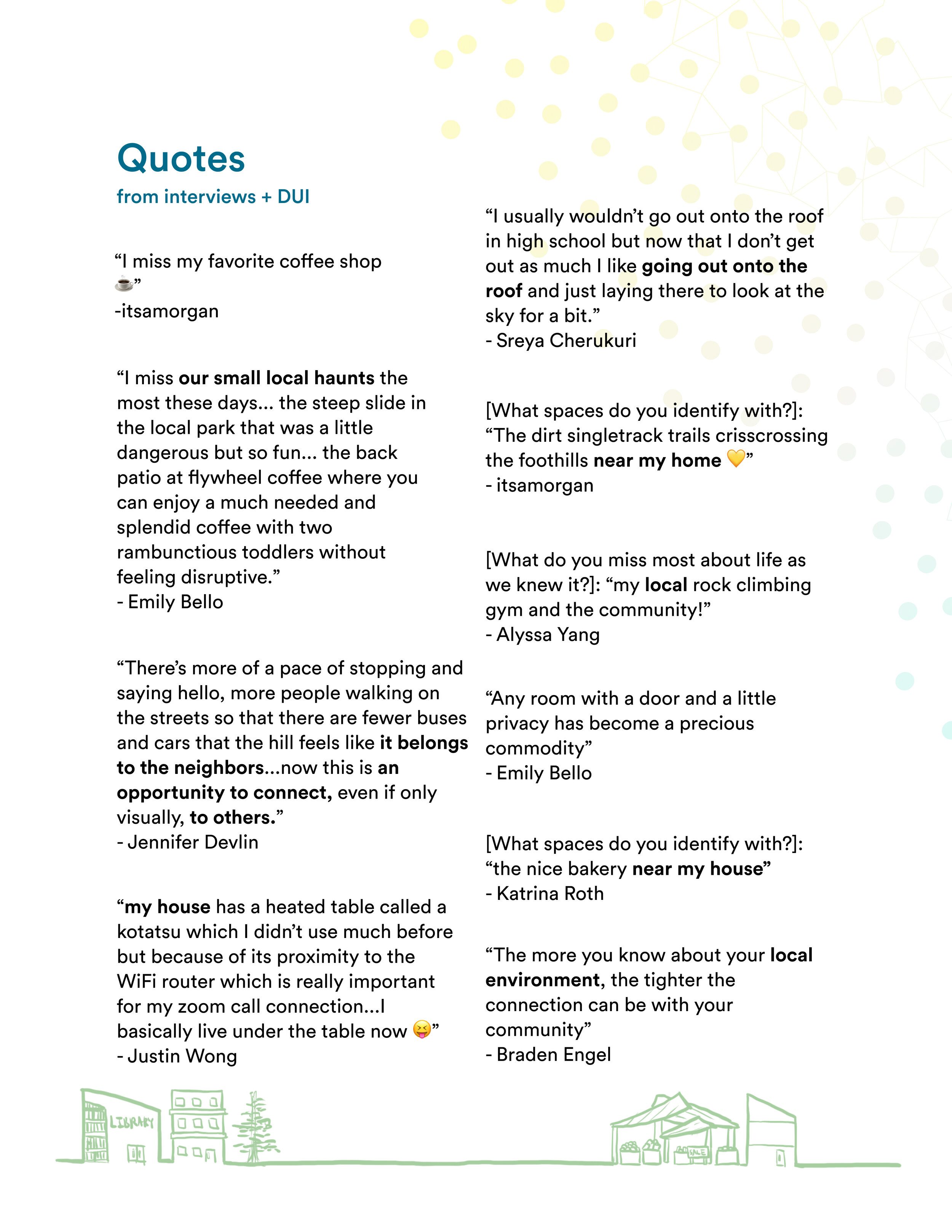



the process
research
Our team used a variety of research methods including conducting secondary research, ethnography studies, expert interviews, and building a digital community to learn more about urban spaces.
A. Secondary Research
B. Physical Research
Pre-COVID, we mapped out different routes of a walk to take through San Francisco in order to observe public spaces and how people inhabited them. We took the route on the bottom right.
These are pictures from our observation trip through Mission Bay, San Francisco. We visited a park, library, transit station, grocery store, art gallery, and more.
then covid-19 hit, and we had to switch gears.
C. Digital Urban Indoors
The Digital Urban Indoors began as our pivot from research in the physical urban world to exploration in an evolving digital landscape, whose sense of place remains a developing idea and experience. We were in a unique position to explore the relationship between person and place during a pivotal time when our perception and relationship with place had been forcibly and dramatically changed. With this new lens and opportunity, we set out from a distance to weave together the urban narratives that often go unspoken: the moments of belonging and exclusion, (in)equity, and (dis)connect that lend rich depth to often transactional portraits and experiences of the city.
We also devised a series of themes for our questions that we believed would tell a connective narrative well-adapted to the quilt of unspoken stories that we had hoped to build. Each week would address a theme with both the potential to go incredibly deep and to stay superficial (for the sake of accessibility).
The weekly themes we explored:
Quarantine + Digital Spaces
A Week in the City
Hidden Voices + Inequity
Work, Play, Living + Urban Identity
Change
B. Interviews
We also wanted to interview professionals in architecture and related fields to learn more about their perspectives on successful placemaking.
Specifically, we sought to understand how different disciplines work in tandem to shape public spaces, and how the COVID-19 pandemic has and will further shift these different approaches to build a new understanding of space and placemaking. These are the industry experts whom we interviewed. They shared their experience and expertise surrounding topics of architecture, planning, public policy, history of architecture, and art.
2. synthesis
A. Key Insights
From our various research methods, we were able to identify many key insights categorized into 4 main themes.
Placemaking
Moving forward, 6 ft will be a new metric in placemaking.
Isolation gives the opportunity to discover the multifunctionality of familiar spaces.
Bring nature into space to blend the natural and built environments.
Consider levels of order and flexibility when designing a space.
Collision
Spaces geared towards learning can be hubs for collision, open-mindedness, and empathy.
Serendipity (chance encounters) is important because it creates pockets for empathy building.
Third spaces geared towards collision are often those which most readily foster a sense of belonging.
Radical inclusion needs to also offer a safe common ground for people to explore their curiosities without judgment.
Collision is less natural on digital platforms, and tends to stay within limited communities
Urban Conversations
As a result of quarantine, people have increased connection with local space and communities.
After natural disasters and societal events, thoughtful discussion needs to be made with communities to tackle and address inequities instead of propagating them.
Even in isolation, we seek movement and narrative, shedding new light on how we communicate in and tell the story of urban place.
The future of design work lies in the more accessible digital world.
Agency and Community
Once set free in the city, objects and spaces take on a life on their own—they belong to and evolve with the community, not the creator.
Art and objects in place should welcome conversation, not elitism, erasure, or pure consumption.
Community members need to be included in project development because local knowledge is an often excluded and erased form of knowledge.
Multifunctional spaces lend people agency through choice and diversity, promoting ownership by different communities.
B. Systems Map
While synthesizing our insights across our interviews and initial research, we observed a series of patterns connecting collision, empathy, equity, agency, and more. We’ve mapped out these relationships as a system of urban belonging. Positive arrows indicate that one node increases or augments the next; negative arrows indicate a diminishing of the next.
some quotes I love
“People take ownership of public places we design for them because they felt like they contributed to the conversation personally and consistently and they were heard...It is our building until we hand it over and then it’s theirs. They feel like it is their place of incredible pride.”
— jennifer devlin
“What most public spaces ought to have, and what most successful public spaces do have is contingency, or serendipity -- the possibility for accidents, for surprises to occur. The excitement of a city, the excitement of public space comes when there is a more chaotic environment.”
— Braden engel
“Our experience with sensory, tangible space deeply impacts the psyche. It’s important to have places that give us that space, whether a massage room or a nature walk.”
— ken powelson

final thoughts
The team + Emily and Jessica from EHDD at our very first meeting (before COVID)!
I learned a lot throughout the semester, and really enjoyed working with the EHDD design team on internal projects as well as this design brief. Despite the COVID-19 pandemic, we were able to investigate urban design influences in new digital ways that have exposed us to new processes and ideas. If we had more time, and health standards allowed, our team would have loved to conduct research physically in various urban environments.
A big thank you to Emily and Jessica from EHDD for bringing so much passion and energy to our project, you guys rock!
